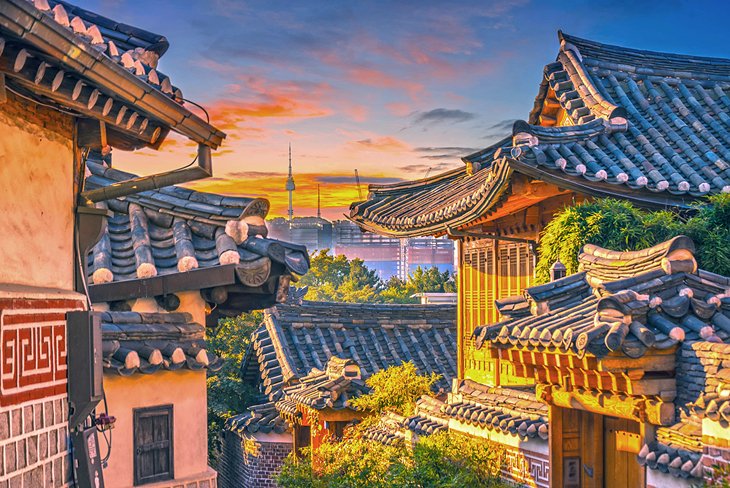Bukchon Hanok Village is a famous tourist destination since it is located on the top of a hill of the heart of Seoul, between the Gyeongbokgung and Changdeokgungpalaces Hanok villages are living museums that can be seen in a few locations in Seoul and Korea.

They allow visitors to not only see what it was like to live in a hanok, but also to imagine what life was like in Korea 600 years ago dating back to the Joseon era (1392–1897) . Many of the hanoks are museums or feature cultural demonstrations, so you can enjoy the tiny, narrow streets while also learning about Korean culture. Many are private residences, and some even provide lodging.
A Brief History



Changing Times

Commoners began to populate the neighborhood as a result of social changes, and hanoks became associated with economically disadvantaged families who couldn't afford more contemporary housing. As people rushed to the high-rise apartment buildings that now dominate Seoul's skyline, many were demolished and left to deteriorate. Indeed, until recently, many of Bukchon's hanoks were demolished to make space for modern office buildings and residences.
Where the Old Meets the New
Indeed, because of their historical significance and beautiful aesthetic, hanoks have become a trend in recent years, with many of the younger generation purchasing and renovating the structures with eco-friendly, sustainable materials.

Over the past decade, Bukchon has become a favourite attraction of Korea’s trend-conscious youth. To cater to these visitors, entrepreneurs have over the years opened a number of fine dining restaurants, cozy guesthouses, interesting art galleries and upscale boutiques throughout the area, many of which are housed in renovated hanoks. Additionally, many existing hanokshave been repurposed as cultural museums and workshops for artisans who practice traditional crafts, preserving the district’s rich history.
The Joseon era is very intriguing I wish I could have a glimpse of it.
ReplyDelete